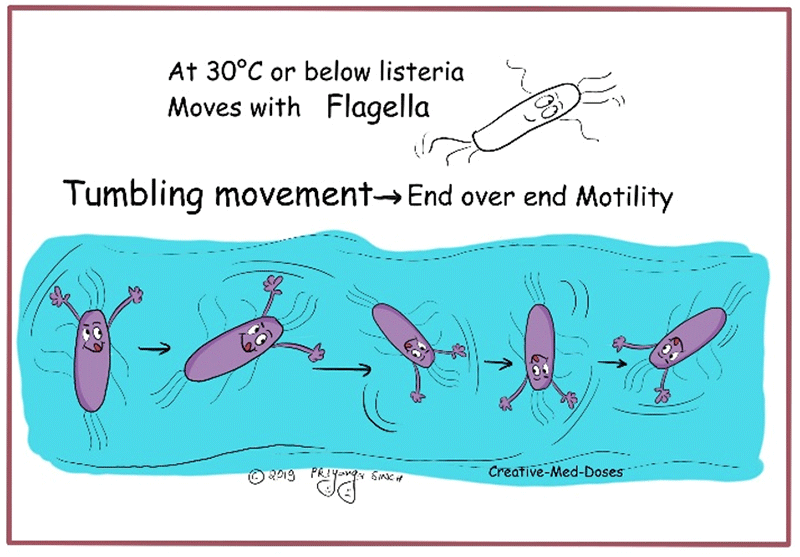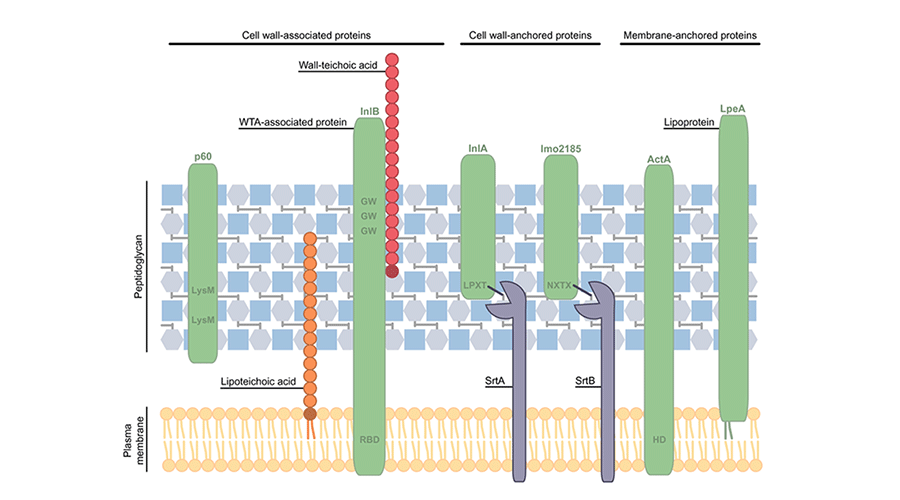This article discusses the main components of the Listeria monocytogenes surfactome, such as teichoic acids, peptidoglycan, cell wall proteins, and the flagellar apparatus.
The Listeria monocytogenes surfactome refers to all the molecules present on the bacterial cell surface.
These surface structures are crucial for the bacterium’s survival, adaptation, and persistence in various environments, including food processing environments.
In particular, the surfactome plays a key role in biofilm formation.
The main components of the Listeria monocytogenes surfactome include:
Peptidoglycan
This is the most abundant structure in the cell wall and provides a basic scaffold for adhesion and biofilm growth. Its synthesis and remodeling are critical for the organization of the cell surface.
Teichoic Acids
These are divided into wall teichoic acids (WTA) and lipoteichoic acids (LTA).
LTA are anchored to the cytoplasmic membrane via a glycolipid, while WTA are covalently linked to the peptidoglycan. Teichoic acids are charged molecules and are believed to play an important role in the initial adhesion to surfaces.
The glycosylation of WTA with rhamnose and N-acetylglucosamine is important for adhesion and biofilm formation.
Cell Wall Proteins
These are diverse and can be classified based on their mode of attachment to the cell surface:
- Proteins covalently bound to the peptidoglycan. These are important for the initial attachment of cells to surfaces, influencing their proper localization and function in biofilm formation.
- Proteins non-covalently associated with the surface.
- Proteins anchored to the membrane via hydrophobic tails or as lipoproteins.
- Autolysins, which contribute to peptidoglycan remodeling.
Flagellar Apparatus
Includes the flagellin protein FlaA (Lmo0690) and is responsible for the motility of Listeria at temperatures below 30°C.
Its expression decreases at physiological temperatures.

These components work synergistically to enable L. monocytogenes to adhere to surfaces, form biofilms, and persist in food processing environments.
The composition of the surfactome can vary between strains, serotypes, and clonal complexes, influencing their biofilm-forming ability and pathogenicity.
The use of enzymes to target the surfactome of Listeria monocytogenes is a promising area of research.
Due to their specificity, enzymes can be used to degrade key components of the surfactome, compromising the structural integrity of the bacterium and its ability to form biofilms.
It is also important to note that many of the cellular mechanisms essential for biofilm formation are also critical for bacterial viability, making targeted strategies against biofilm matrix components particularly promising.
The BIOREM® patent, distributed in Italy by PIRAMIDE, consists of a unique cocktail of multiple enzymes specifically designed to degrade biofilms and also active against components of the Listeria monocytogenes surfactome, thereby hindering the adhesion phase of cells to surfaces.
Piramide, a partner of Realco for over 30 years, continuously supports its clients through a team of experts, assisting them in applying customized enzymatic protocols with Biorem®, as well as in analytical and diagnostic phases, using cutting-edge investigative methods.
If you found the article on teiconic acids and other components of the surfactoma of Listeria monocytogenes interesting, we invite you to read:



